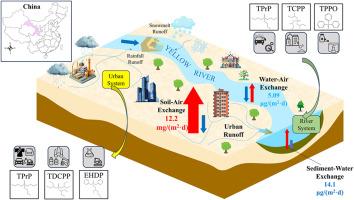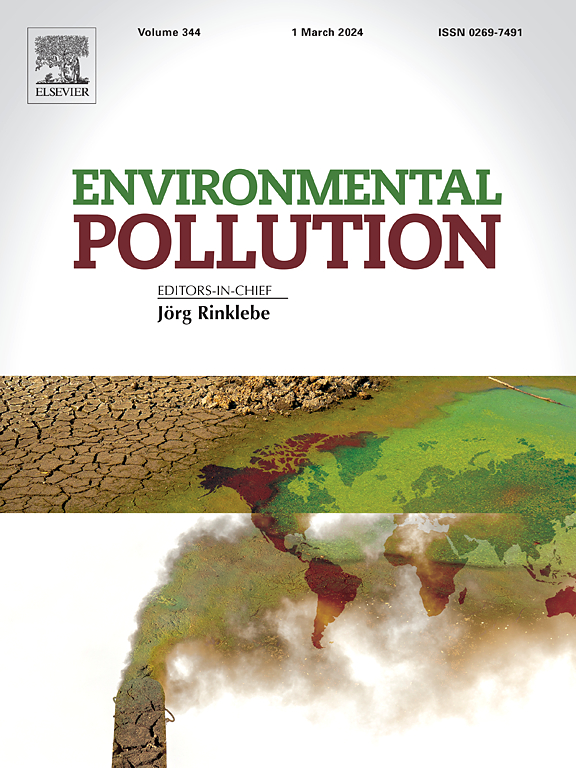Multimedia Distribution and Exchange Characteristics of Organophosphorus Flame Retardants in a Typical Semi-Arid City in China
IF 7.6
2区 环境科学与生态学
Q1 ENVIRONMENTAL SCIENCES
引用次数: 0
Abstract
After the ban on polybrominated diphenyl ethers (PBDEs), the replacement of these compounds with organophosphorus flame retardants (OPFRs) has drawn widespread attention worldwide. In arid/semi-arid regions, characteristics such as low precipitation, frequent strong winds, and low soil organic carbon content potentially influence the environmental fate of OPFRs. In this study, we investigated the concentrations of nine OPFRs in water, sediment, soil, air, and dry deposition in Lanzhou, an arid/semi-arid region in China. The total concentration of OPFRs (Σ9OPFRs) were 54.8 – 334 ng/L in water, 37.3 – 484 ng/g (dry weight, dw) in sediment, 134 – 510 ng/g (dw) in urban soil, 1.53 – 6.22 ng/m3 in urban air, and measured dry deposition fluxes were 119 – 681 ng/(m2·d). TPrP, TDCPP and TCPP were the primary OPFR individuals in water and sediment, while TPrP, TDCPP and TPPO predominated in urban soil and air. The fugacity approach revealed the environmental fate of OPFRs were mainly: soil-to-air, air-to-water and sediment-to-water. Ulteriorly, intermediate exchange fluxes were calculated. This study reveals that in this climatic region, urban soil acts both as a "sink" for emissions and a "source" for re-emissions into the atmosphere, further emphasizing the significance of atmospheric transport as a critical pathway in this area.

求助全文
约1分钟内获得全文
求助全文
来源期刊

Environmental Pollution
环境科学-环境科学
CiteScore
16.00
自引率
6.70%
发文量
2082
审稿时长
2.9 months
期刊介绍:
Environmental Pollution is an international peer-reviewed journal that publishes high-quality research papers and review articles covering all aspects of environmental pollution and its impacts on ecosystems and human health.
Subject areas include, but are not limited to:
• Sources and occurrences of pollutants that are clearly defined and measured in environmental compartments, food and food-related items, and human bodies;
• Interlinks between contaminant exposure and biological, ecological, and human health effects, including those of climate change;
• Contaminants of emerging concerns (including but not limited to antibiotic resistant microorganisms or genes, microplastics/nanoplastics, electronic wastes, light, and noise) and/or their biological, ecological, or human health effects;
• Laboratory and field studies on the remediation/mitigation of environmental pollution via new techniques and with clear links to biological, ecological, or human health effects;
• Modeling of pollution processes, patterns, or trends that is of clear environmental and/or human health interest;
• New techniques that measure and examine environmental occurrences, transport, behavior, and effects of pollutants within the environment or the laboratory, provided that they can be clearly used to address problems within regional or global environmental compartments.
 求助内容:
求助内容: 应助结果提醒方式:
应助结果提醒方式:


